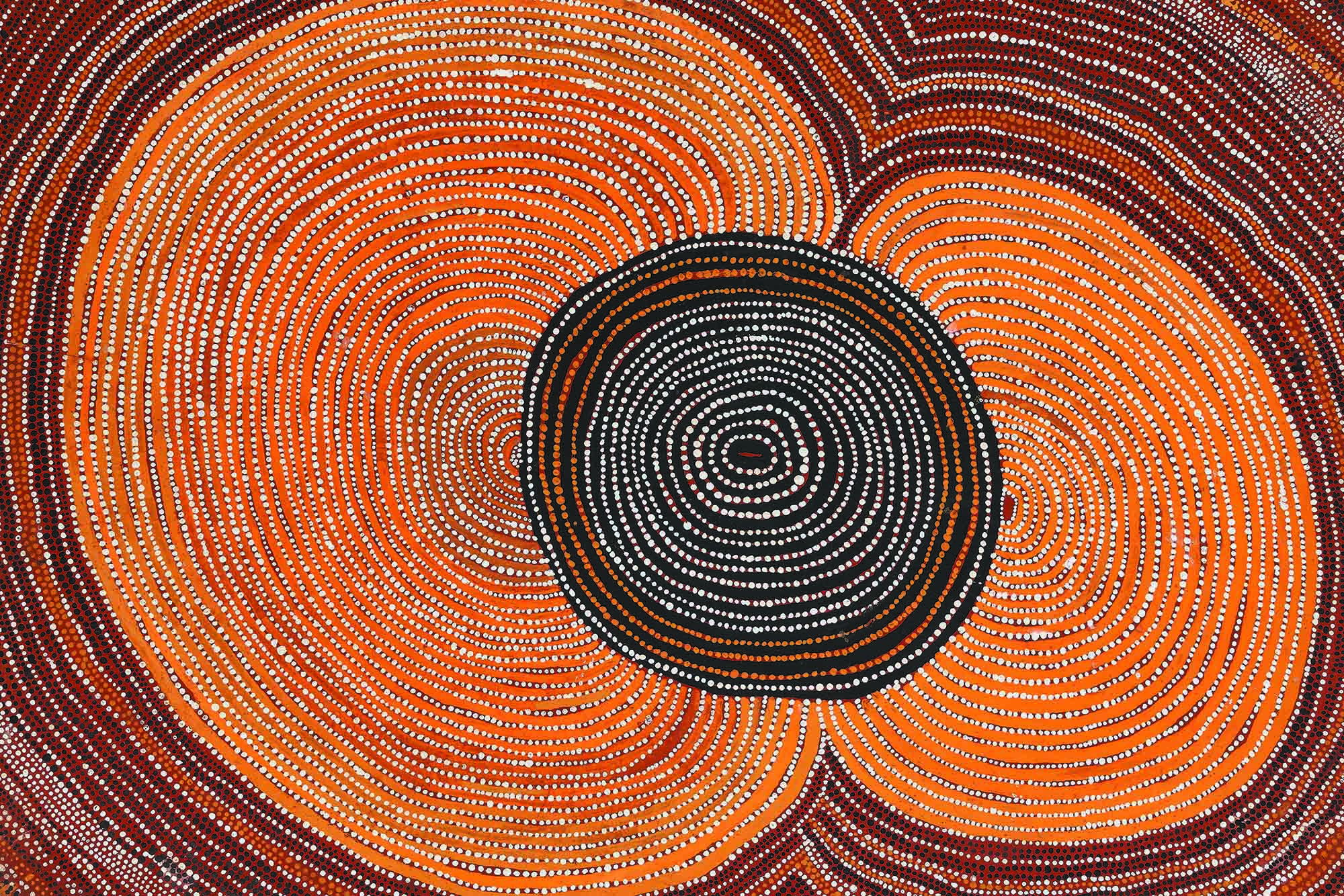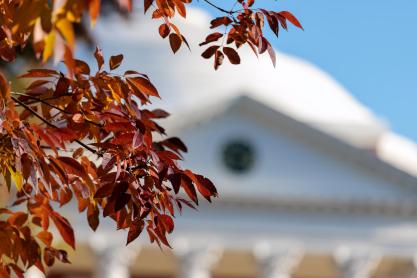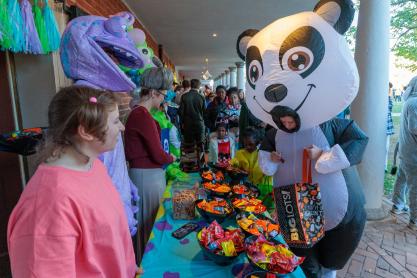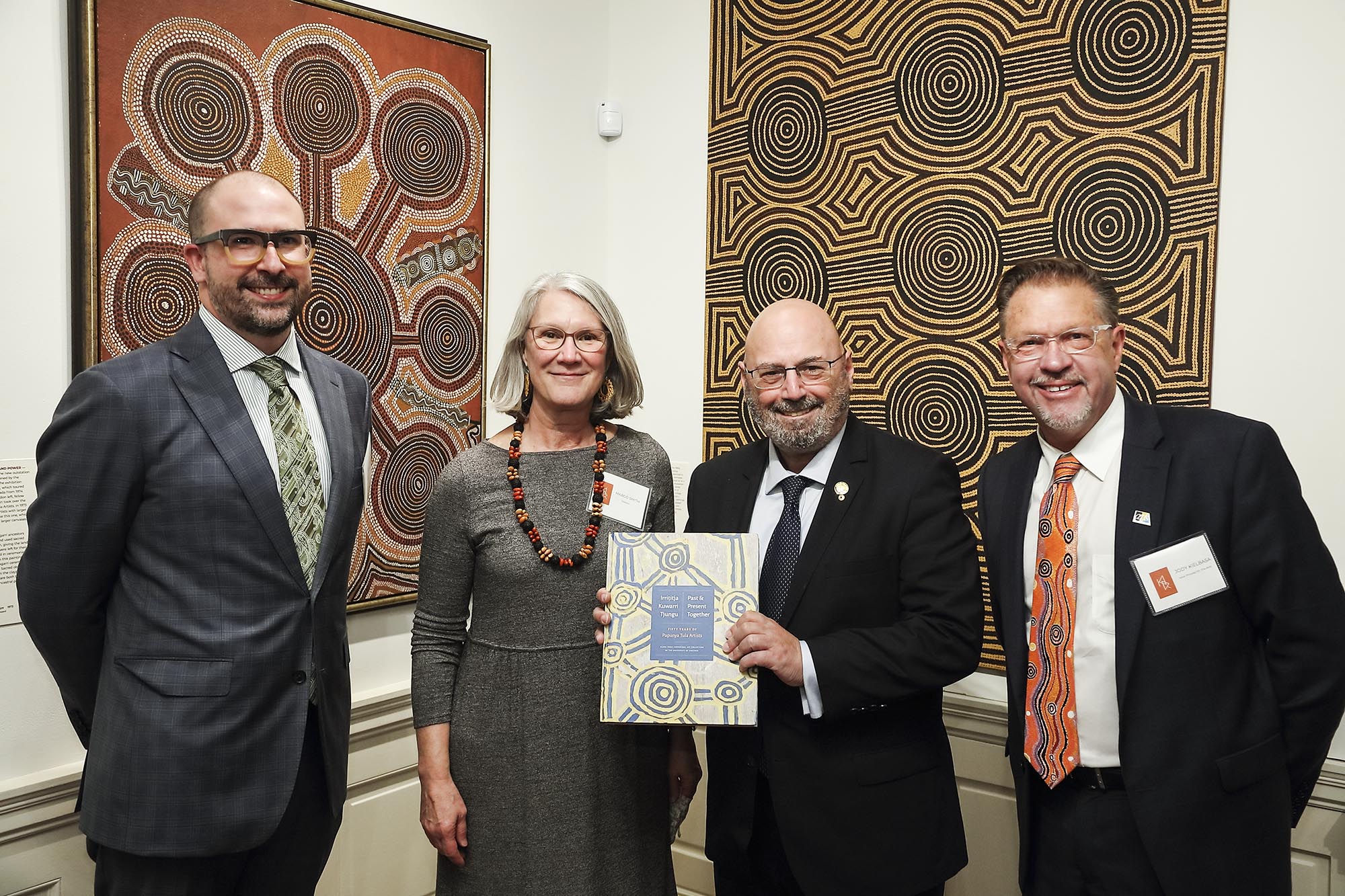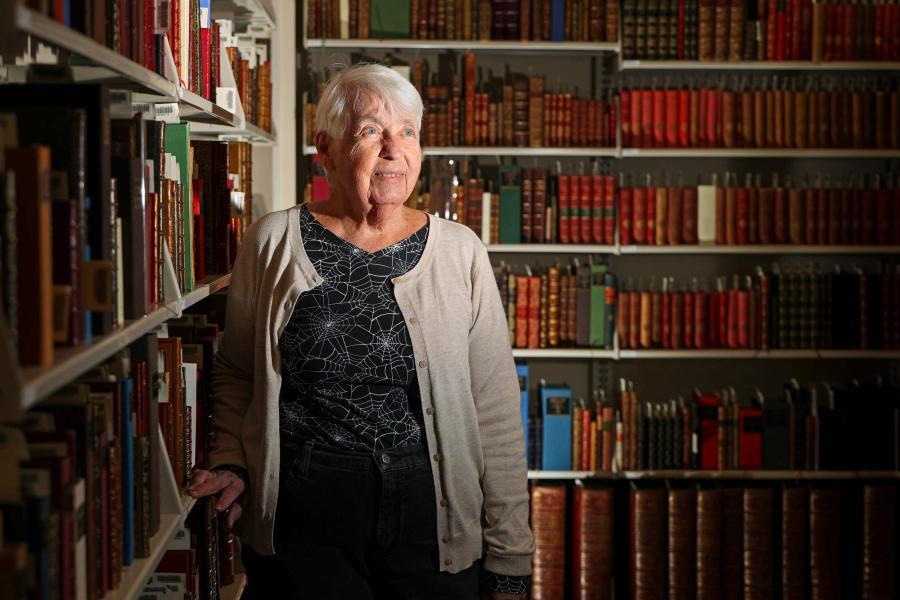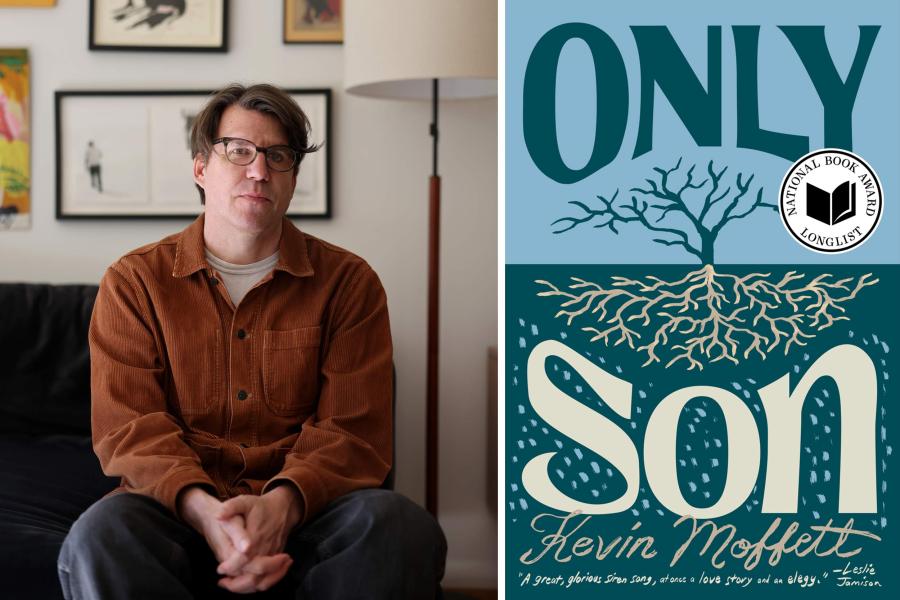A new book and website tell the story of a small group of Aboriginal artists from Australia who changed the face of global art history – and the resources were produced by the only museum dedicated to Aboriginal Australian art in the United States, the University of Virginia’s Kluge-Ruhe Aboriginal Art Collection.
The book and virtual exhibition accompany an in-person exhibition at Kluge-Ruhe and chart the artists’ movement that began in 1971 in the township of Papunya, in Australia’s remote central desert. Motivated by the artists’ desire to preserve and transmit their cultural knowledge in the face of great adversity and displacement, the movement quickly grew into an artistic renaissance that has also served as a powerful medium for economic and social justice.
The township of Papunya was founded in 1959 as a settlement for Aboriginal people who were relocated from their homelands. It drew together Aboriginal people from a disparate range of language groups: Luritja, Pintupi, Anmatyerr, Warlpiri and Kukatja. Some had considerable experience with white Australians; for others, life in Papunya represented their first encounter with colonizers.
Inside this bubbling, cross-cultural cauldron, a small group of men began to paint their ancestral designs onto scraps of cardboard, linoleum and Masonite.
From these humble beginnings, the artists eventually began creating the epic, abstract paintings that travel the world today. A multi-million-dollar industry emerged, creating a powerful voice for Indigenous artists.
“Painting is a medium for the expression of relationships, of memory, of sadness and of joy, and also of one’s relationship to the country,” said Fred Myers, anthropologist and Silver Professor of Anthropology at New York University, who began working with Aboriginal artists in the early 1970s.
